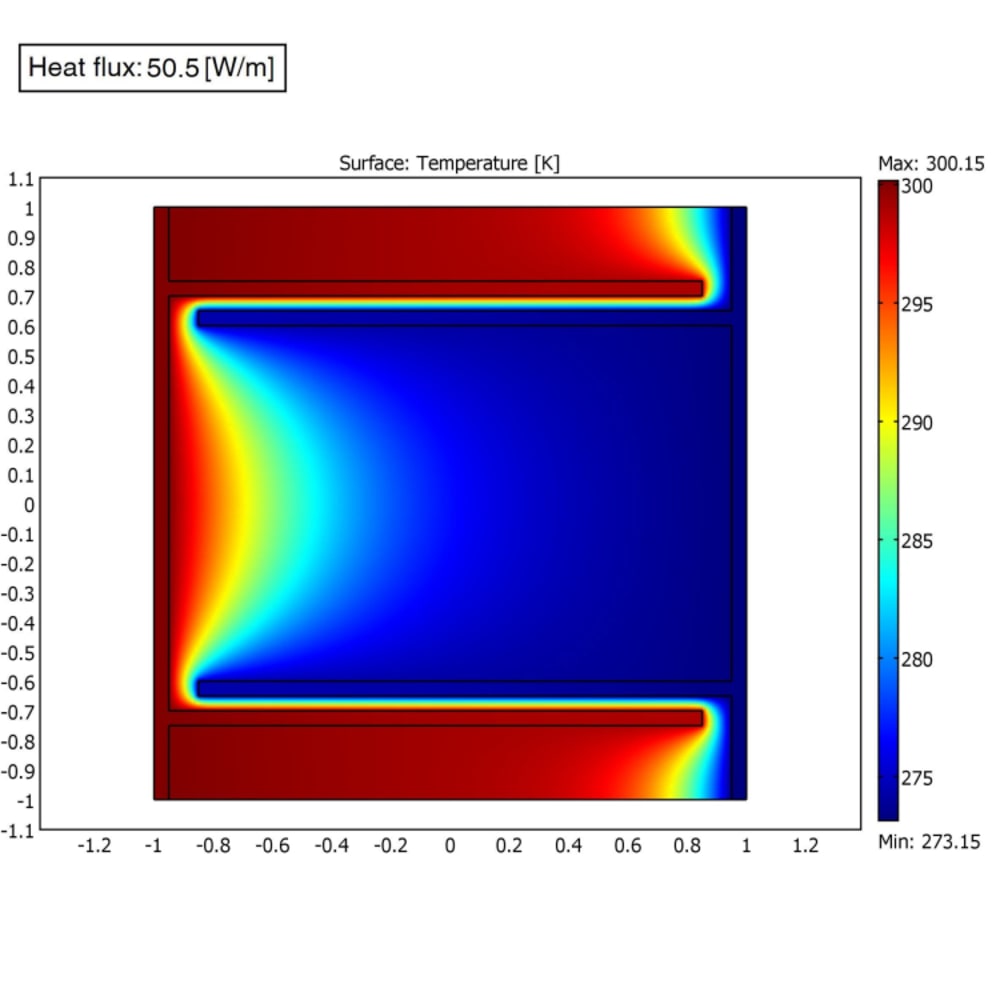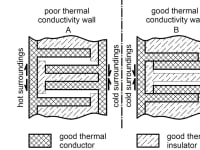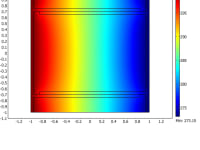
Buildings are one of the most intensive consumers of natural resources and account for a significant portion of the greenhouse gas emissions that affect the environment. In the U.S., buildings account for 38% of all CO2 emissions and represent 72% of U.S electricity consumption, EIA (2008). Thermal insulation represents the easiest and most effective building energy and efficient technology available at the moment. However, for hot days, the insulated building remains warm even if the surroundings are cooler and extra energy is needed to keep the internal thermal comfort. In this way, an innovative intelligent wall based on thermal semiconductors (TSC) is proposed to overcome such problems. TSC’s have the feasibility to operate automatically as a good conductor or as a good insulator depending of the temperature difference between inside and outside. The idea behind TSC’s is quite simple and combines thermal expansion/contraction and materials with distinct thermal conductivity. The TSC system presented here consists of two parallel plates of a good conductor with internal fins (Figure 1). The remaining space is filled with a good insulator and a gap is left between fins with corresponding apparent surfaces. Higher temperatures at the left side of the wall promote its thermal expansion. On the other hand, lower temperatures at the right side of the wall promote its thermal contraction. As showed in Figure 1-A, this conjugated effect keeps the corresponding fin surfaces apart from each other enhancing, in this way, the thermal insulation between the left and the right regions. On the contrary, when higher temperatures occur at the left side and lower temperatures occur at the right side, thermal expansion and contraction takes place, respectively (Figure 1-B). Because of this conjugated effect, the contact between the corresponding fin surfaces takes place increasing the capability of the system to conduct thermal energy. Thus, this TSC system automatically switches between good or poor thermal conductivity wall by appropriate temperature gradients. In practice, TSC’s can be manufactured by using conventional materials available in the market today. TSC’s can replace standard thermal insulations panels without difficulty. Even typical insulation materials are suitable, preserving, in this manner, businesses and jobs. The use of good conductor materials is minimal considering that, by the Fourier Law, higher heat transfers can be achieved by thin walls. The above mentioned features enhance the manufacturability, marketability and cost-effectiveness of TSC systems. In addition, TSC walls can be employed in roofs and floors also. Based on computational simulations, a TSC ratio (i.e., the ratio between the heat transfer conduction in one direction and in its respective reverse direction) in of 18.9 was achieved (compare Figure 2 and 3). The encouraging results revealed a wide horizon for developing promising TSC systems which will provide solutions for many thermal design problems (heat storage systems, nanotechnology, spacecraft , clothes, etc.) in macro-, meso-, micro- and nano scales. Concluding, by using TSC’s, buildings can make the most of the heat transfer crossing their envelop maintaining the thermal comfort, saving money and avoiding CO2 emission. (SDG)
-
Awards
-
 2010 Top 10 Most Popular
2010 Top 10 Most Popular
Like this entry?
-
About the Entrant
- Name:Marco Bernardes
- Type of entry:individual
- Hardware used for this entry:Personal computerSoftware used for this entry:COMSOL Multiphysics
- Patent status:patented








